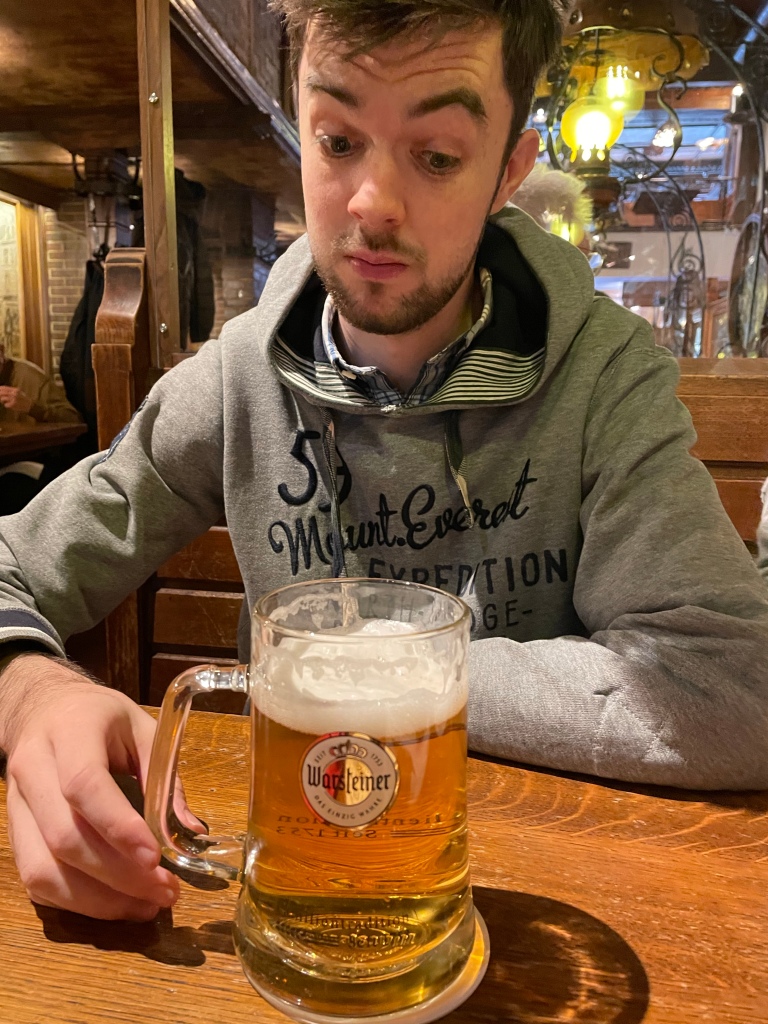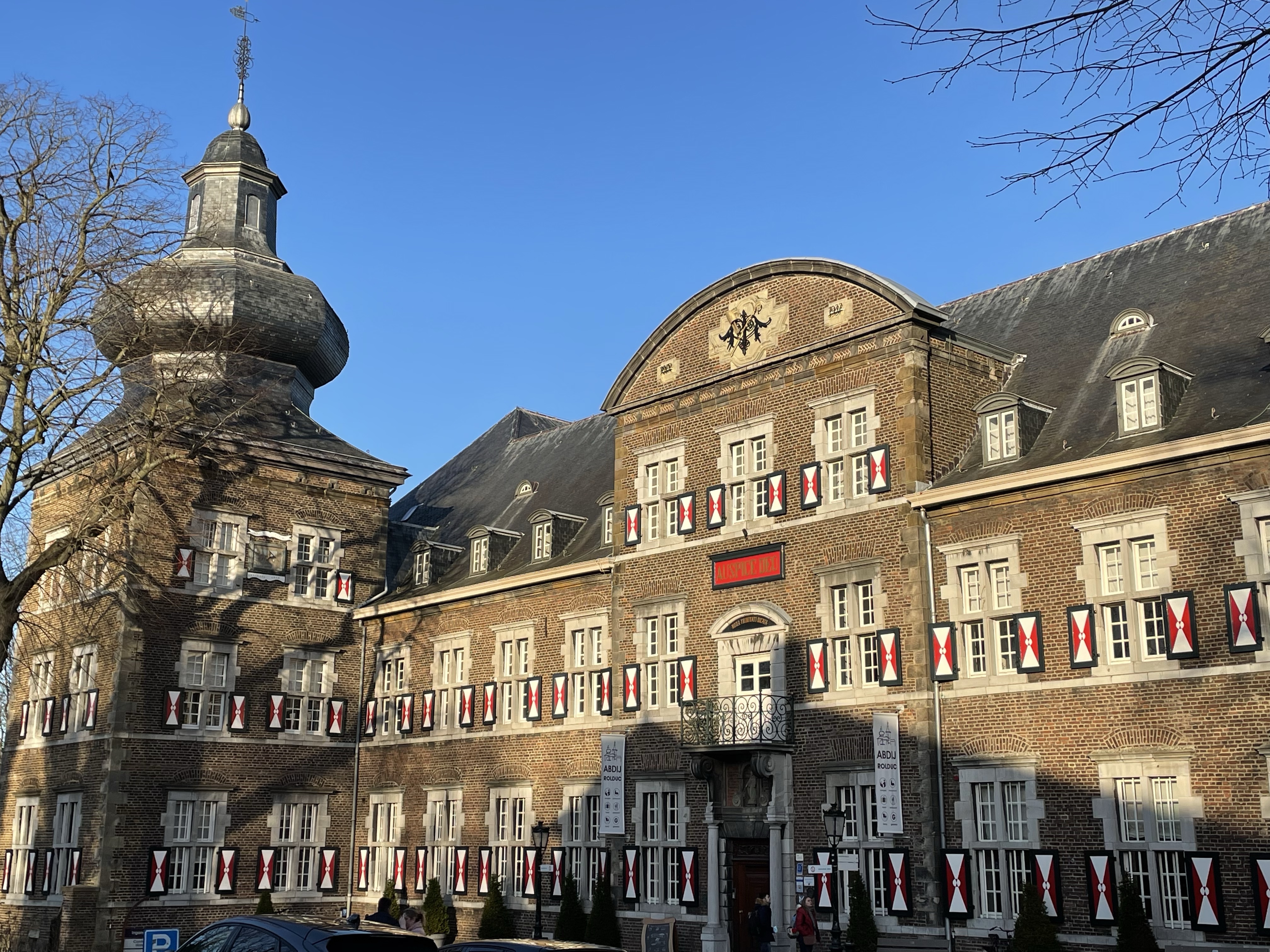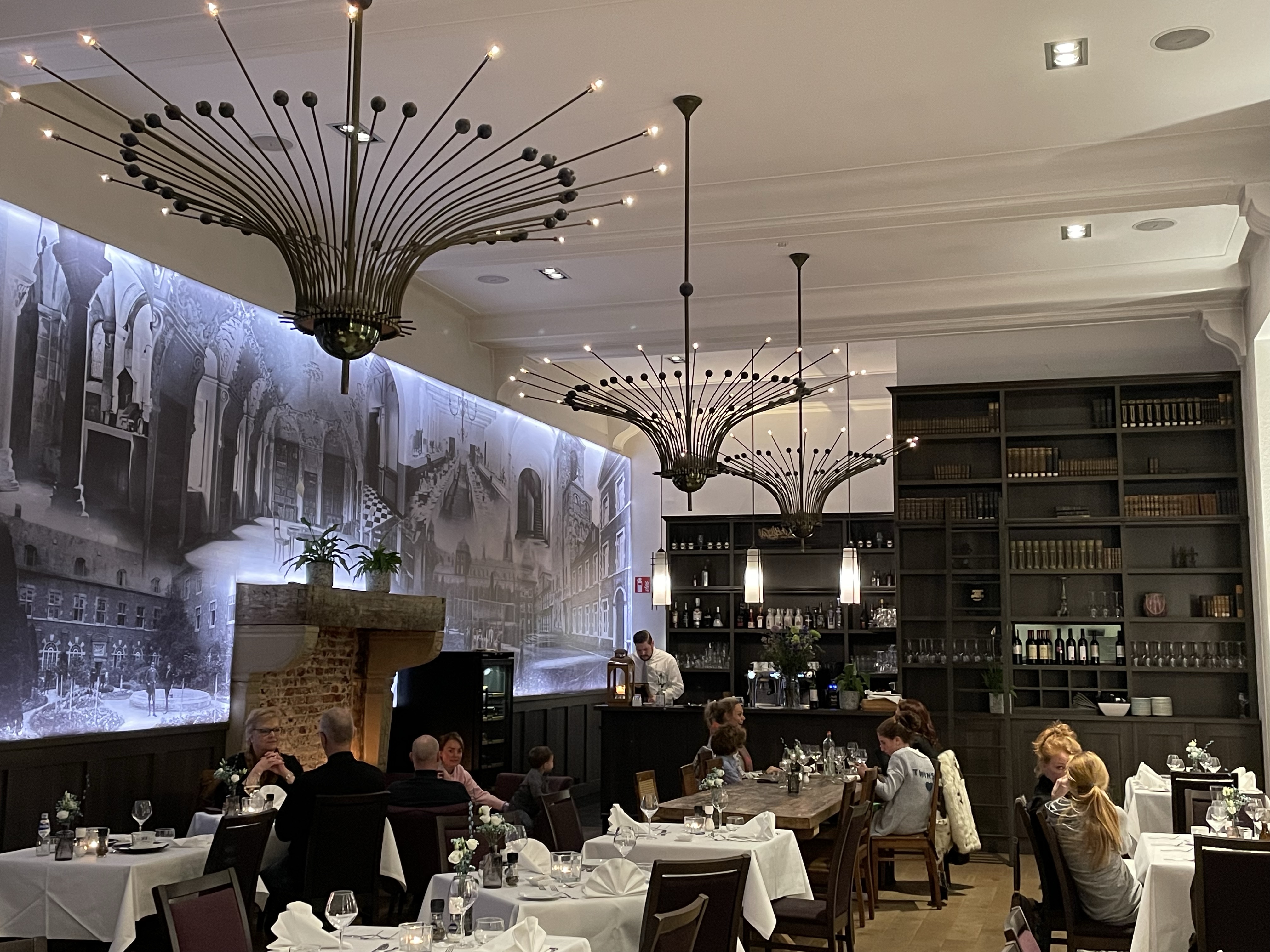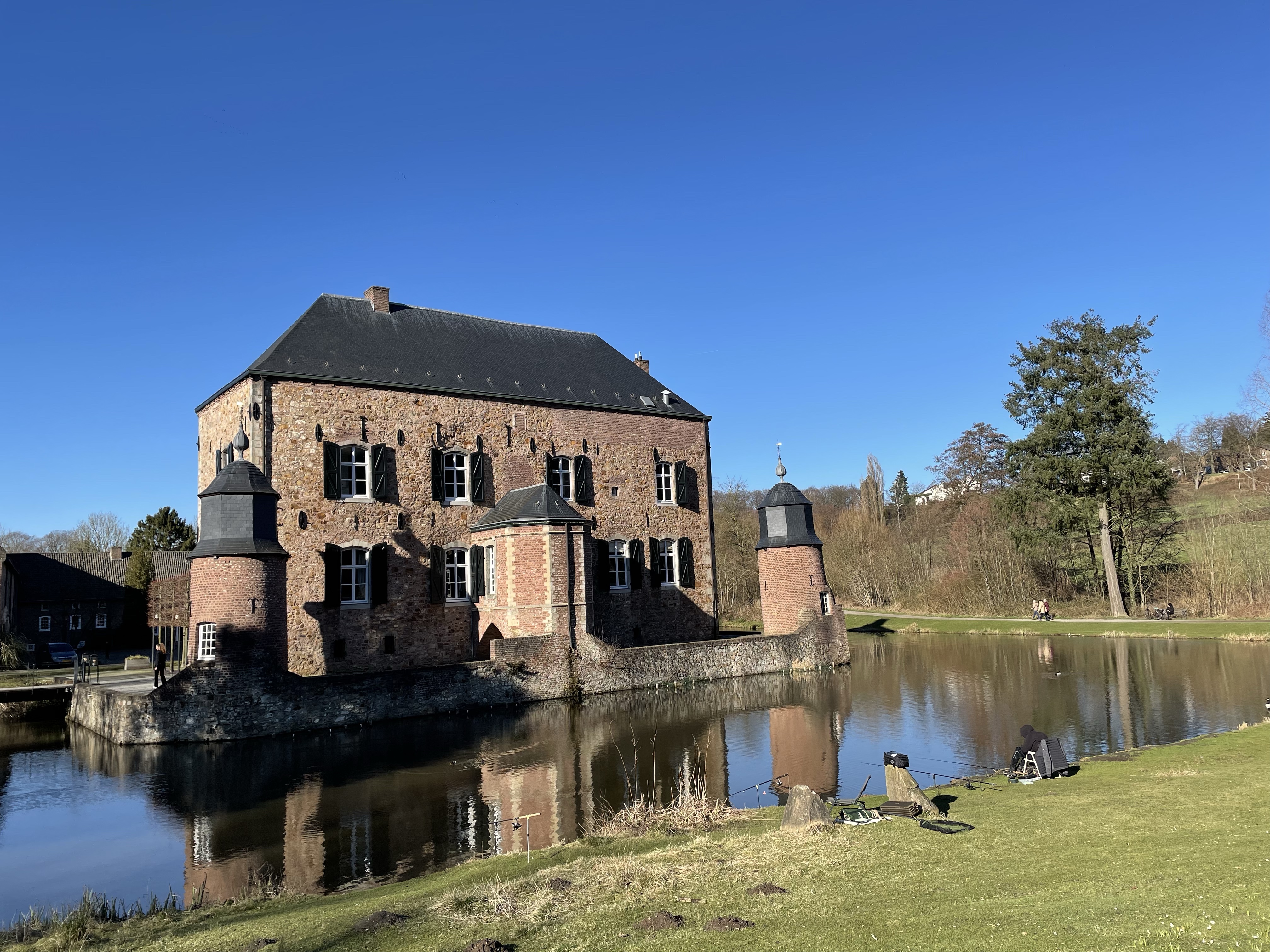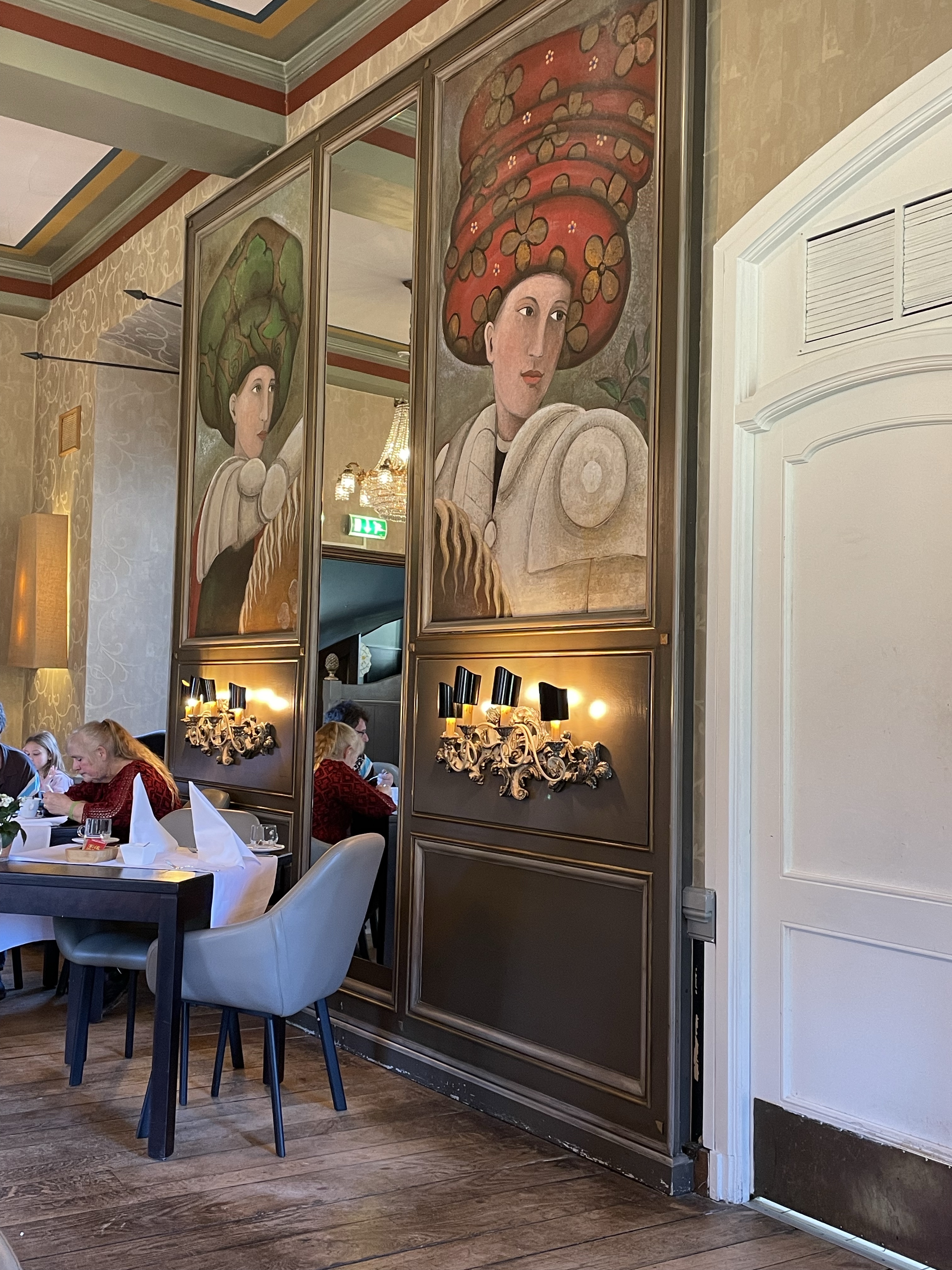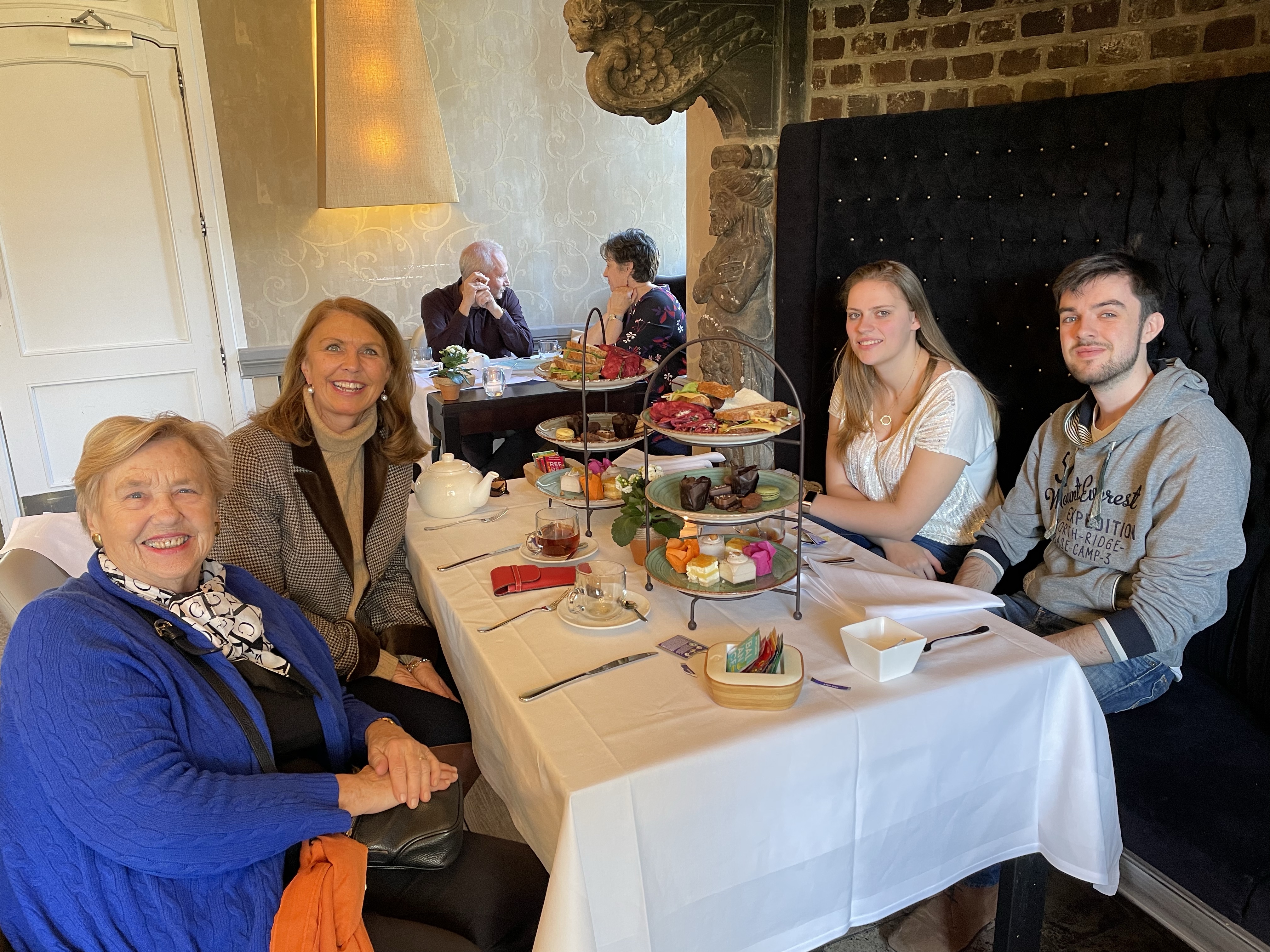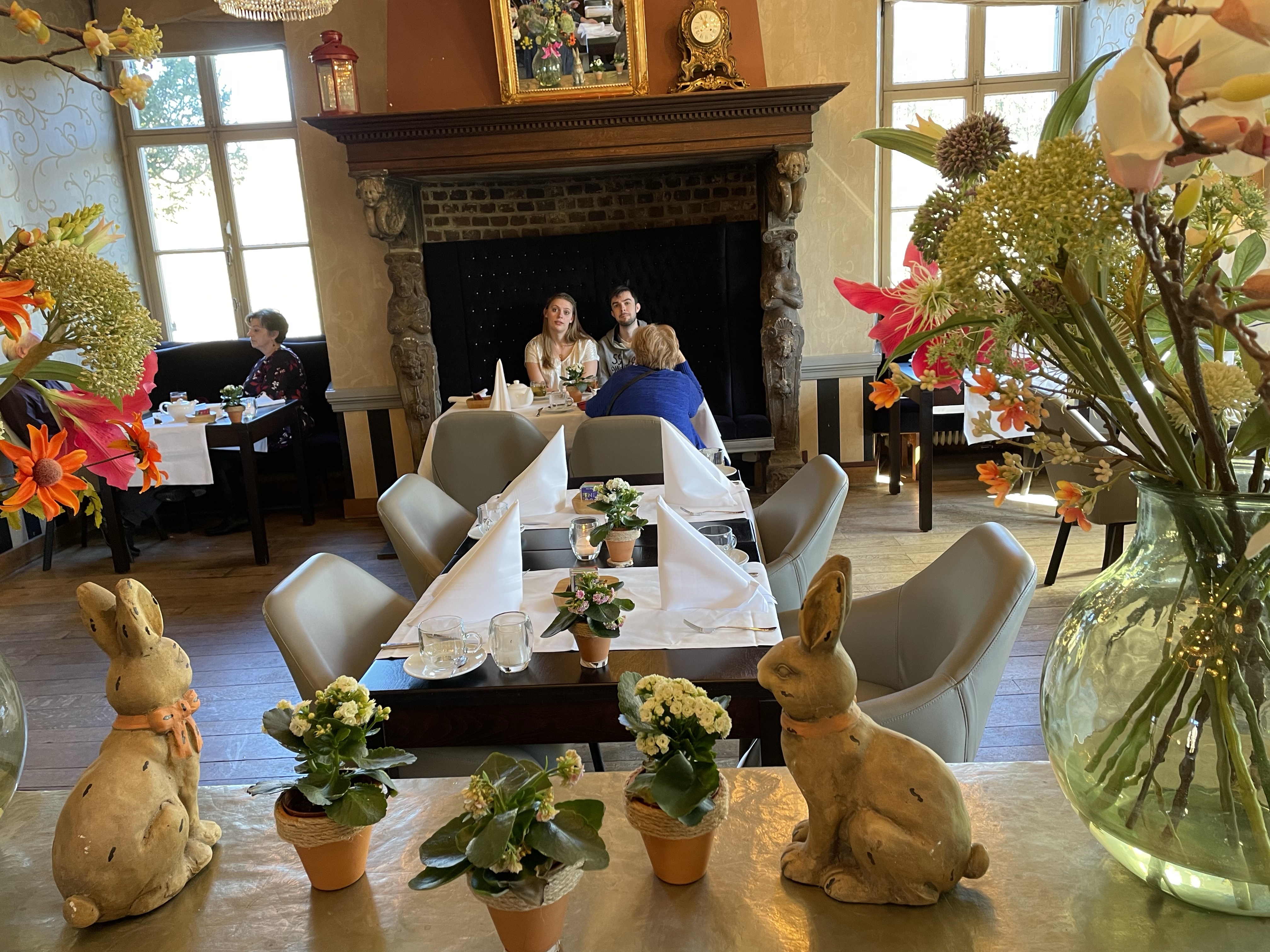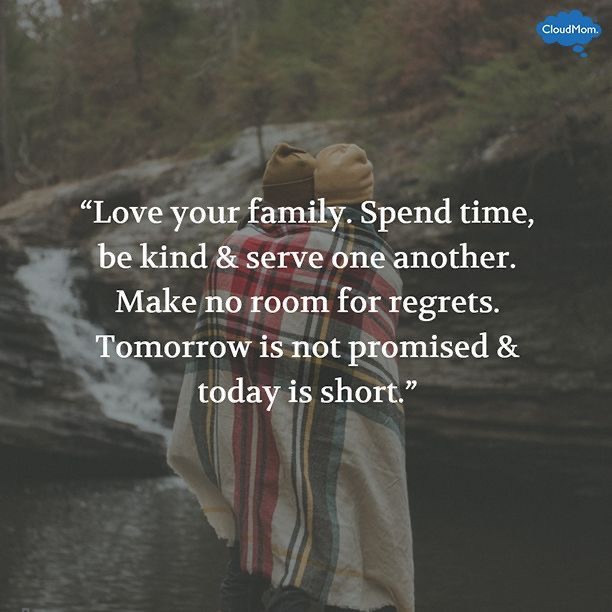My son Max and girlfriend Caitlin deserved to take a little break. They’ve been with their noses in schoolbooks since Christmas, so it was high time to save them from going completely mad and take them away for a few days. But where could we go: Somewhere in Belgium, in Holland or in Germany….Or… why not do all three?! Off we go: starting with Aachen in Germany

The sun is shining and we take a little break at the kids their preferred ‘Starbucks’.

After a bit more than 2 hours, we arrive in Aachen, Germany. Aachen is known as ‘the city of Charlemagne’, ‘, ‘Aken’ in Dutch, Aix-la Chapelle’ in French and ‘Oochen’ in Luxembourgish. With no doubt Aachen is the perfect place for anyone interested in Europe’s history. If you know a bit about the history of Germany, you must be aware that Aachen is mostly known for ‘Charlemagne’ – the father of Europe. We are all enjoying the first sunshine of the year, strolling around the old town, full of narrow streets, small shops and unique looking cafés and patisseries. Food everywhere somehow always makes me hungry.







Speaking about food, my mother smells her childhood food, so we decided to go and taste a bit of sausage and leberkase in das ‘Aachener Brauhaus’. Everything sounds so delicious: Sauerbraten mit Knoedel, Leberkaese mit Kartoffelsalat and of course Schnitzel. Not to forget the Apfelstrudel….We are in heaven!




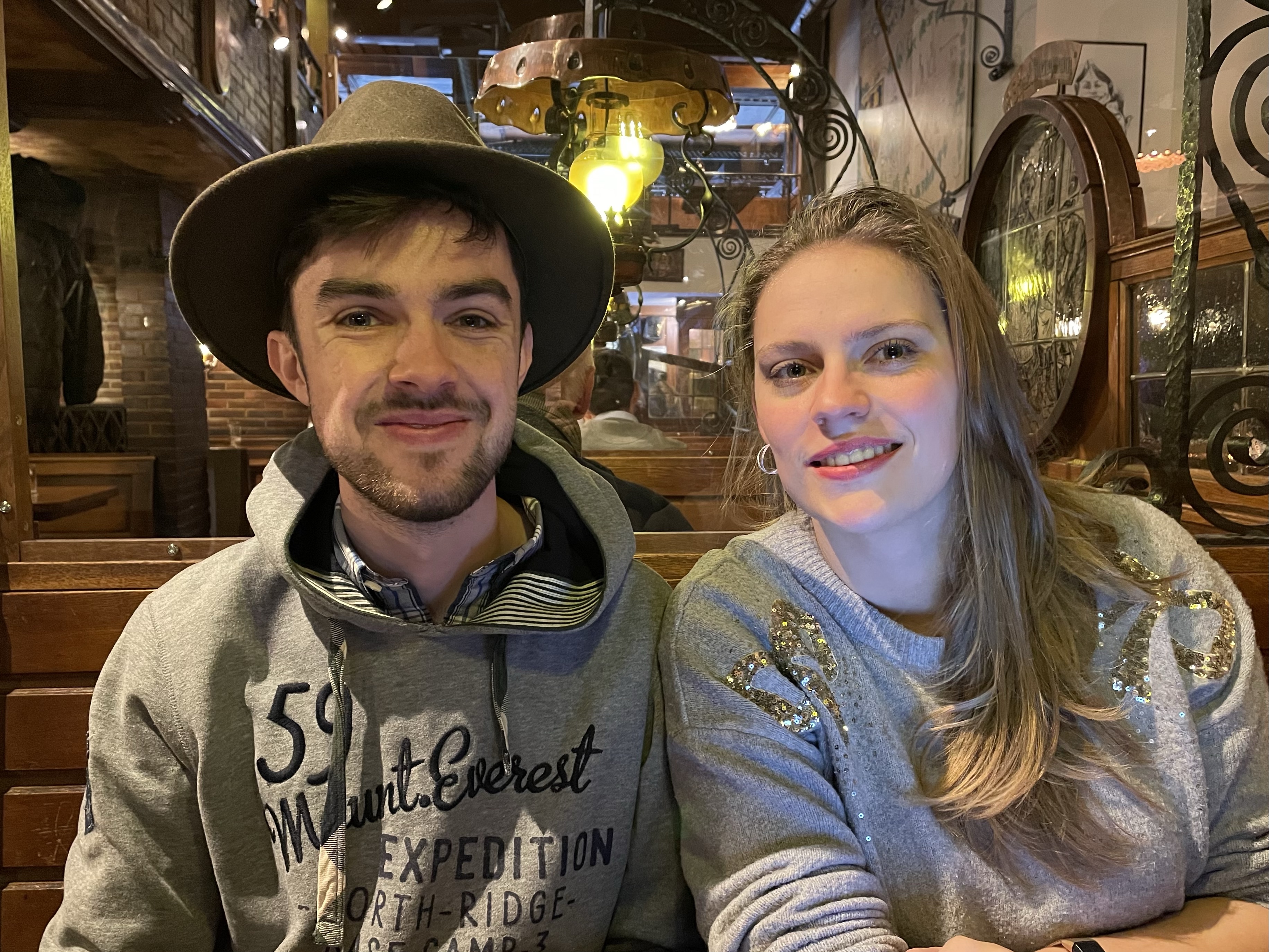
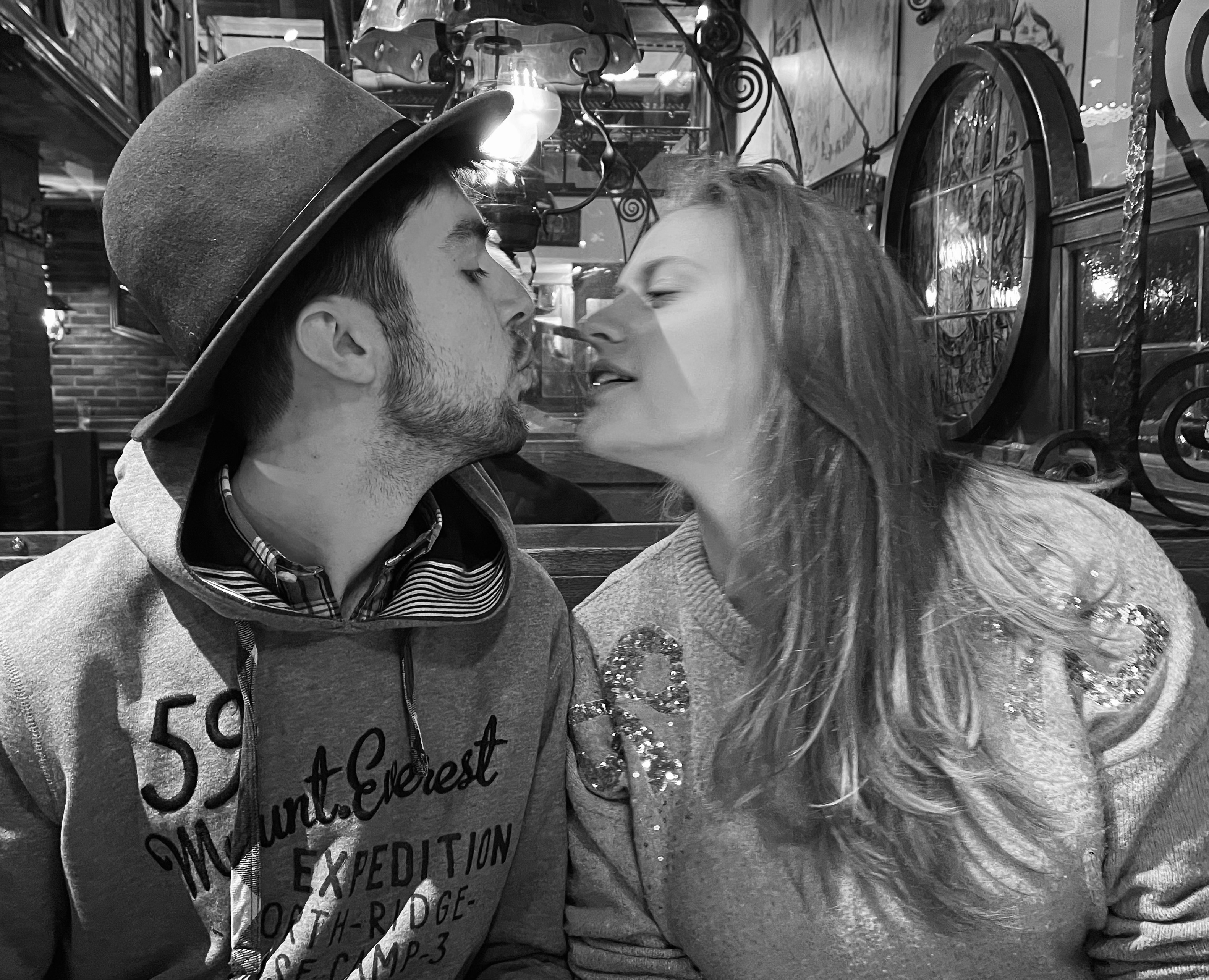


Since the Aachen Cathedral is one of the highlights of Aachen it cannot be missed. This stunning cathedral built in 813 represents the rule of Emperor Charlemagne, one of Europe’s most effective rulers who united Western and Central Europe. During his rule in the 8th century, Aachen became the capital of his empire, simply as it was his favorite. Following this period, numerous German emperors and kings were crowned at the Aachen Cathedral. However, the city declined after Frankfurt am Main took the place of Aachen as the crowning city. Charlemagne was buried here in 814 and you can still view his grave.







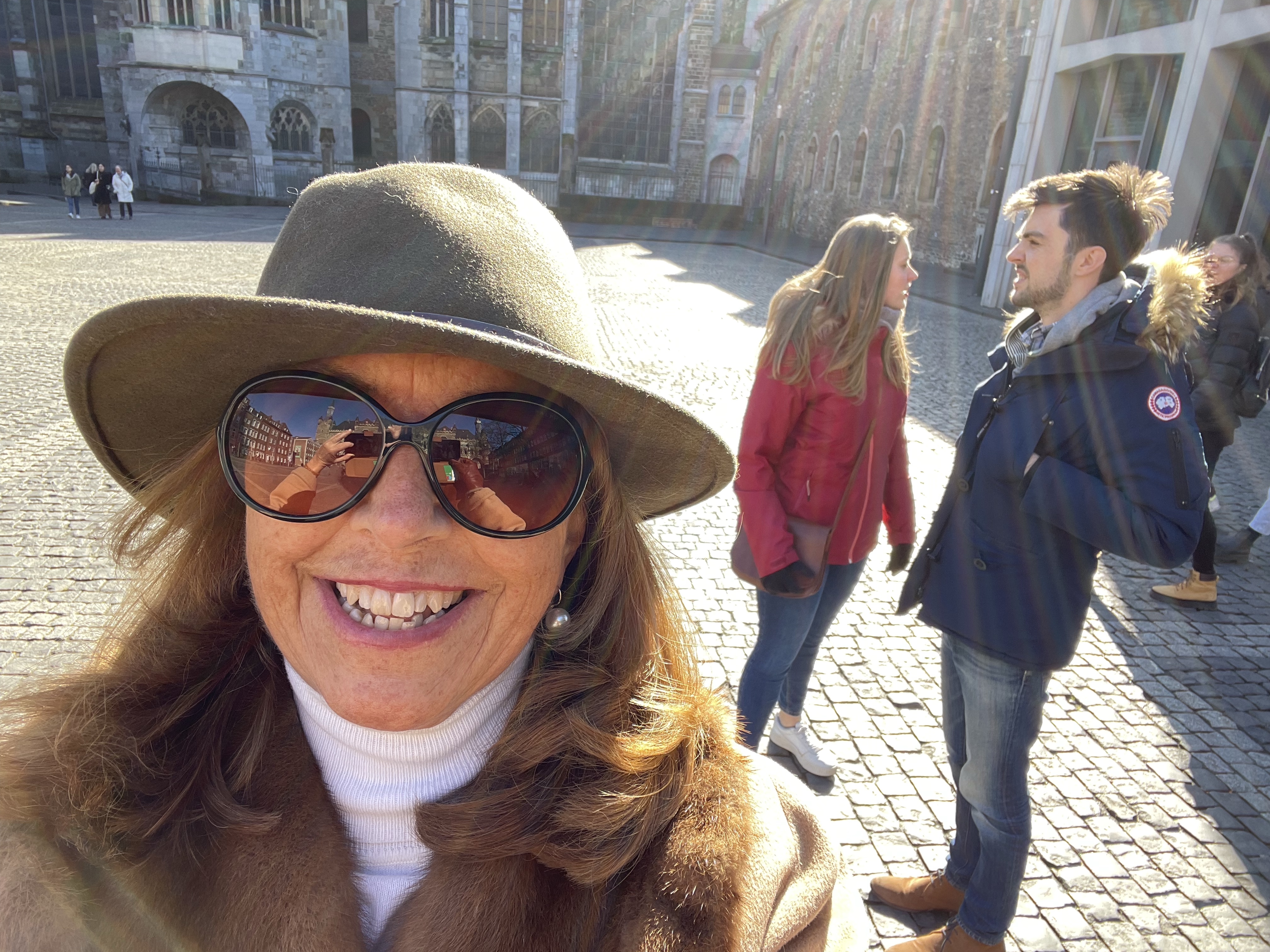


The absolute highlights of the Dom include the Barbarossa Chandelier, as well as plenty of incredible mosaics (in total, over 32 million stones were made to create the intricate mosaics!). All in all, the cathedral at Aachen is easily one of the most beautiful cathedrals in Europe, if not the entire world… It is hard to imagine that, during WW2, Aachen was almost completely destroyed. On the other hand, this was also the first German city, which was captured by the allies.
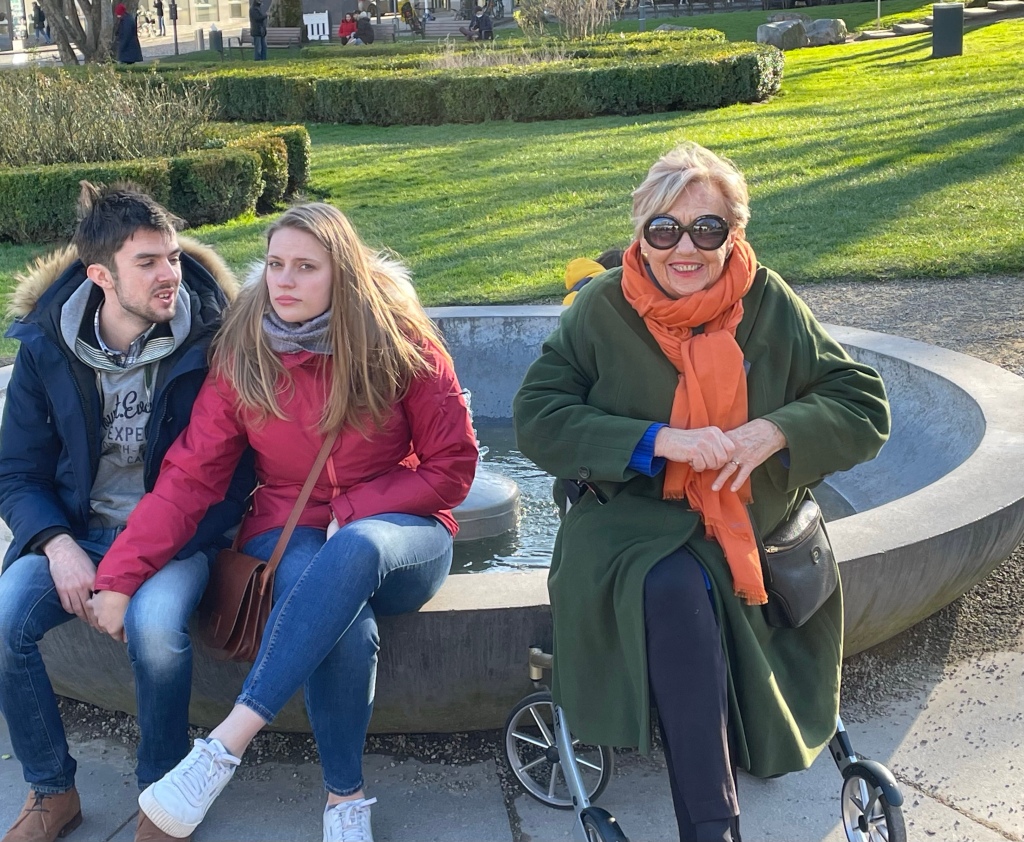
We have spent a perfect day in Aachen and that is why we were sorry we needed to leave it so quickly. We returned to the car with bags full of Leberkase, Weisswurst, Susser Senf and Printen.



Last but not least, if you really want to impress locals, make sure to learn the Aachen greeting. All you have to do is wave with your pinkie up in the air. The greeting came from the Aachen industry, where they once produced sewing needles, which were sold all over the world. Because the sewing needles were small, they used children to remove the bad ones from the good ones. To do that, they used their little fingers and that is where, the Aachen greeting originate from..


